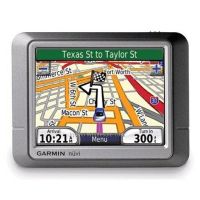If you find yourself on the road often then a global positioning system (GPS) could be a wise investment. A GPS uses a satellite to configure a location and then relays the information to you so you can find your way in unfamiliar territory.
Long gone are the days of using paper maps or pulling over at the gas station to ask for directions … that is of course if you have a quality GPS system. Once you do decide to get one, you need to decide what functions to look for to ensure that you get the best GPS for your lifestyle.

The first thing to consider is how you’ll be using the device. If you don’t log that many miles during the week and/or are very familiar with your surroundings then a top of the line GPS device doesn’t make much sense.
Most smart phones come equipped with capabilities to get you from Point A to Point B. If this is all you’d be using it for then you may not even need to get a dedicated GPS system.
If you find yourself making constant road trips or driving in unfamiliar terrain, you’re going to want a GPS with a few more bells and whistles. Some of the higher end models can include wireless FM transmitters that can be integrated into the car’s stereo system, and/or Blue Tooth capability which provides the ability to call hotels, restaurants, or really any place straight from the GPS in the event you need to get more information ahead of time.
They could also include real time traffic updates. Some will also have voice capability as well which could come in handy for the advocates of hands free devices.
As said earlier, there are many navigation systems on the market today. Three stand out above all the rest: Garmin Nuvi 3790T, Motorola MotoNav TN765t, and the TomTom XL 340 S. All three of these have different things to offer the buyer.
The Garman is one of the thinnest and lightest of the three models. It is the best looking of the three and is completely hands free with it being voice activated.
The Motorola has bluetooth hands-free calling and updated software. One negative with this device is that the service can be broken up by tall buildings. The Motorola might not be the brand name people associate with navigation devices but this one can stand up with the more established brands.
The TomTom has added some features that have never been found on a mid level device like this one. With the ability to find the best fuel prices, user updated maps and an easy to use touch screen, this device gives you a lot for the money.
As shown by three devices above there are a wide variety of GPS devices available to the customer. Be sure to look at your needs and figure out what you are willing to spend. You will get more features if you spend more but not all features are necessary to get you from point A to point B.
